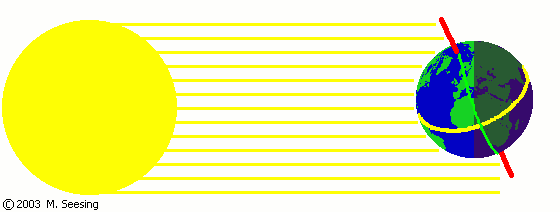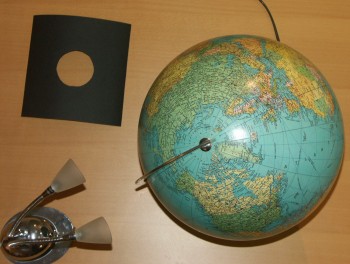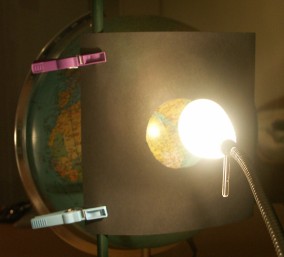 > ACCENT en > Climate Change classes 1 > 1 Energy from the Sun > Experiment solar radiation
> ACCENT en > Climate Change classes 1 > 1 Energy from the Sun > Experiment solar radiation
|
Incoming solar radiationWe can demonstrate by means of a globe, a piece of black cardboard and a spotlight or lamp why solar radiation heats the spherical Earth differently. |
Material Required are: 1 globe |
|
|
Setup A round hole is cut into the black cardboard by means of spring bow compass and scissors. The cardboard is fixed between lamp and globe with the help of a stand in a way that the light of the lamp forms a sharp circle or oval on the globe. |
For the following procedure it is important to keep the distance between lamp, cardboard and globe constant. It has some advantages if the light from the lamp is directional but if the light source is not too much point-shaped. In contrast to a lamp or a spot light with a diverging light cone the sun rays are nearly parallel, since the Sun is far larger than the Earth. |
|
 |
|
|




